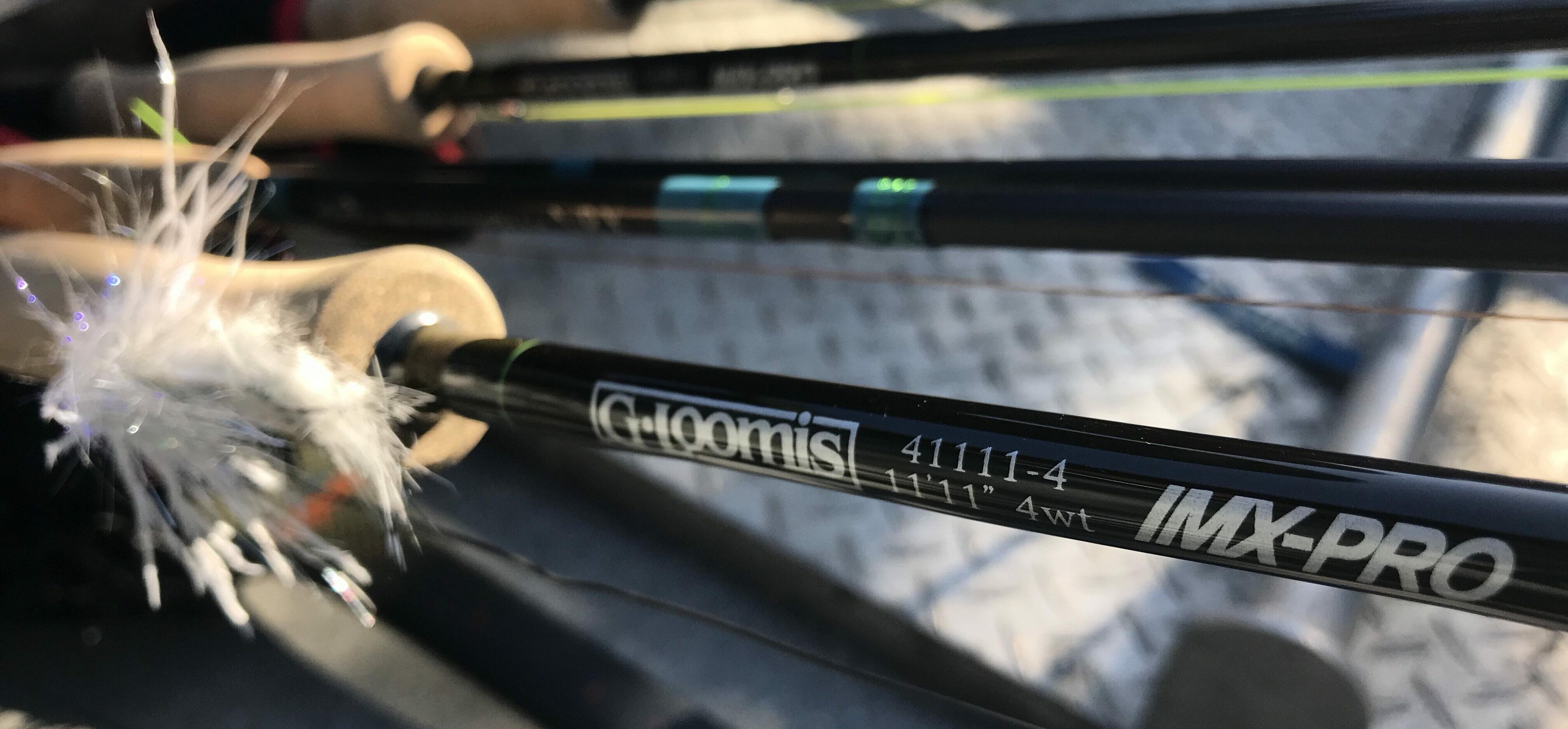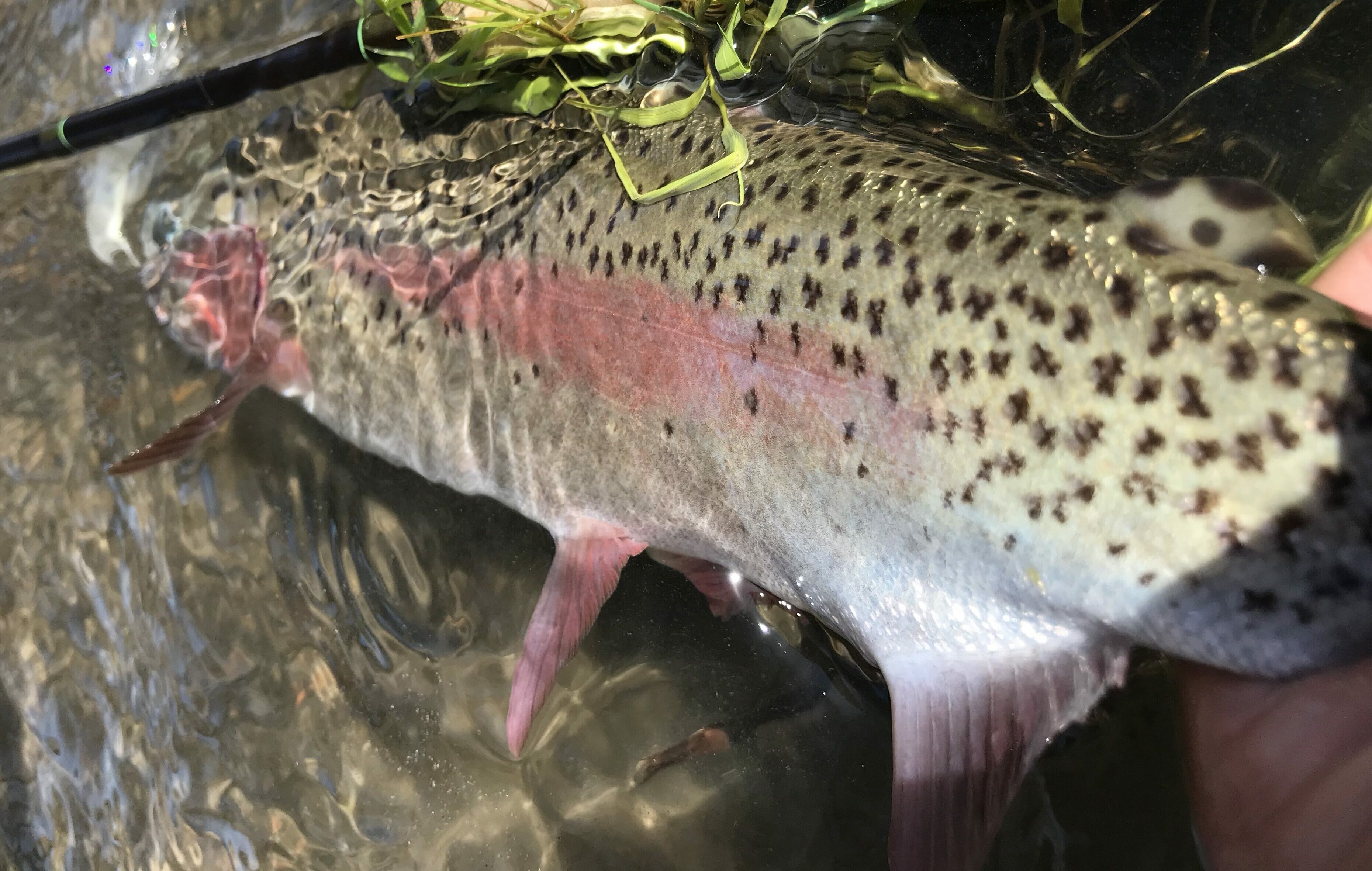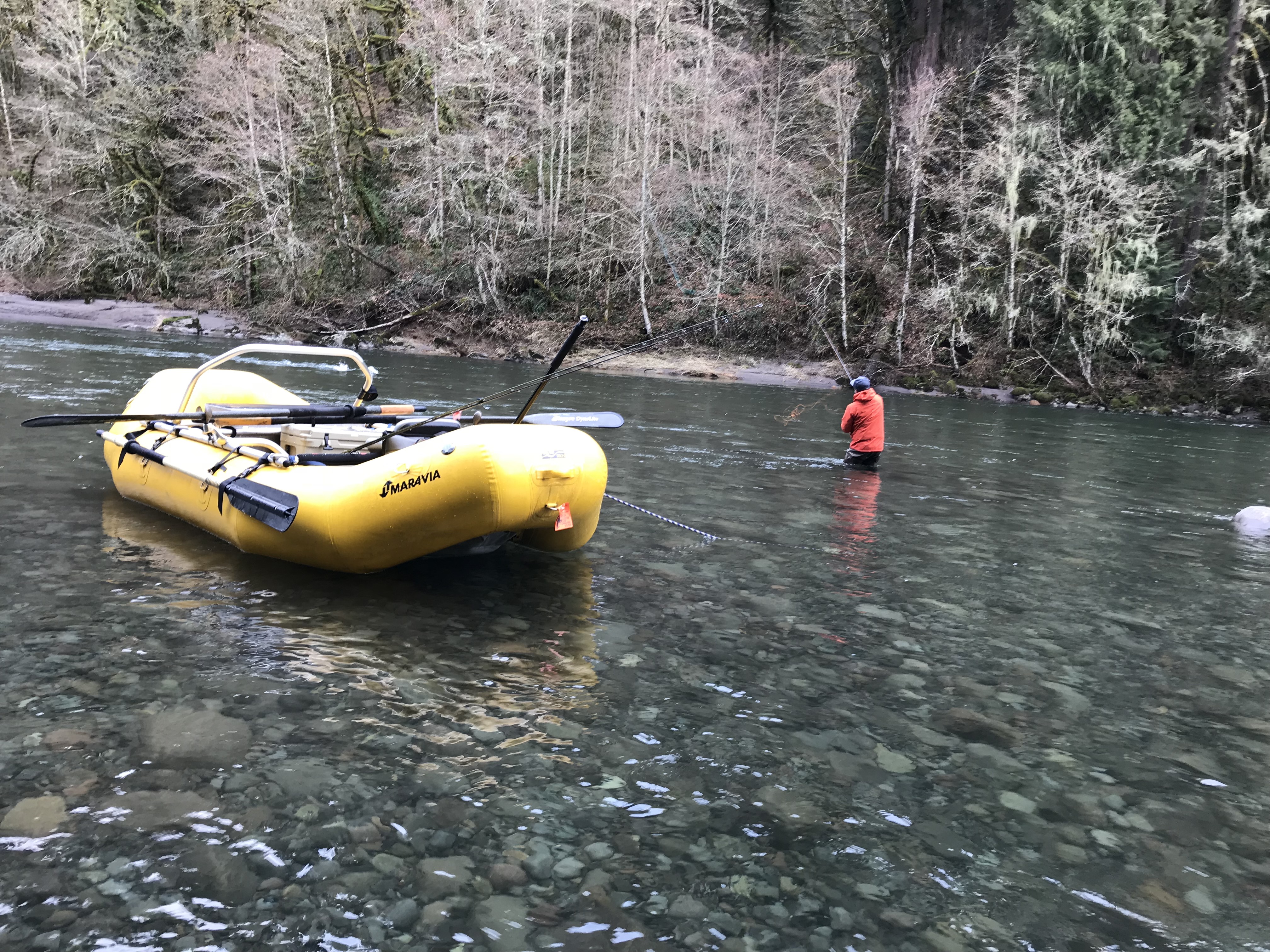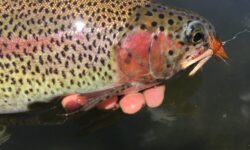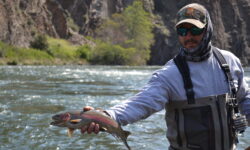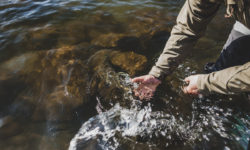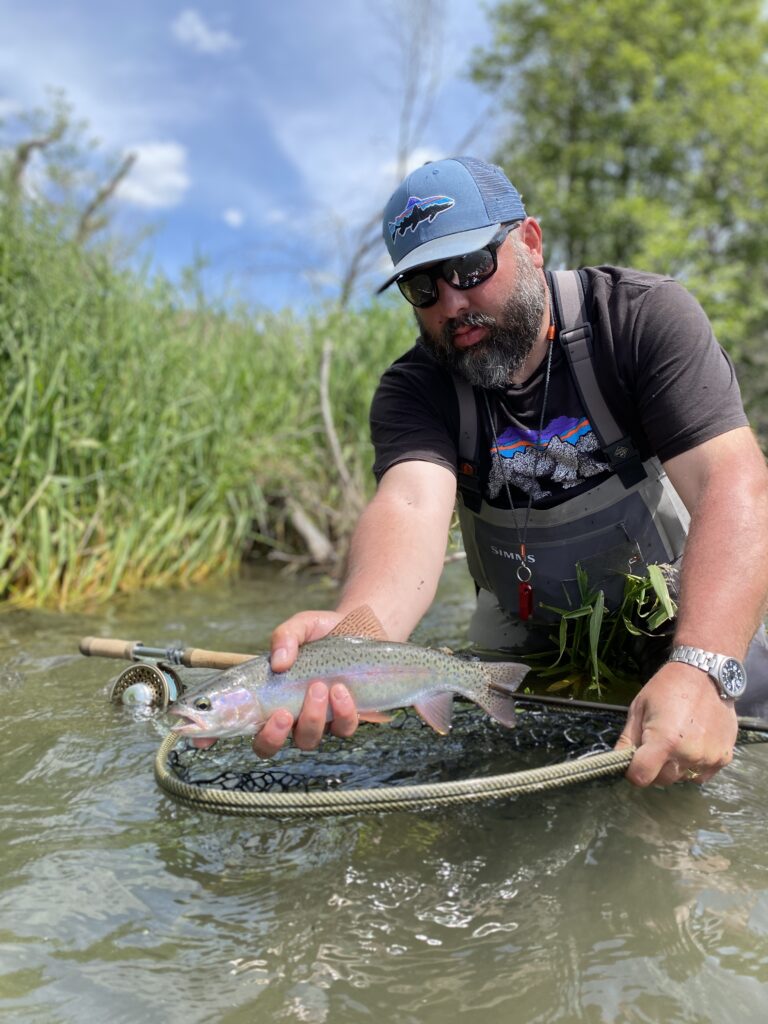
Why Deschutes Trout Spey?
Answer: It’s a lot of fun swinging flies and getting yanked real hard.
Did you know sculpins are a disproportionate part of the Deschutes Redside’s diet. In fact at times sculpin, or cotus, make up most of a trouts diet. We have long thought redisdes to be bug eaters, and they are but sculpins and crayfish are key to sustainable growth and survival for these fish. Trout eat sculpin more than mayflies or caddis, it’s a fact.
As a spey freak and trout spey enthusiast I have long noticed that on some days trout kill anything on the swing, sometimes. I have long contended that when trout are not on bugs they will eat a sculpin pattern. This is anecdotal evidence of course but I can’t think of a single time trout fishing when they are off the bug bite that they won’t grab a sculpin pattern.
Oregon Department of fish and wildlife has done some extensive research on the Deschutes Redside. What fish eat and what time of year, that data is available. For an entire year ODFW went to key locations and euthanized trout to see what they were eating. The same places (trout creek to Beavertain), the same time of month for twelve months. This data is quite old 1986-9. In 2009 PGE started Selective Water Withdrawl, concerned anglers wanted to know what changed for the fish. In 2014 and again in 2015 ODFW resumed the trout studies. What the fish eat hasn’t changed, in fact it hasn’t changed much at all.
Table 6. Weight by order and percent composition of total volume of food items in stomach samples of redband trout in the Deschutes River, late February to mid-March, 2015.
Food Item Ephemeroptera, Plecoptera, Tricoptera, Cottus (Sculpin) Other Weight (mg) 5.64, 38.79, 8.2, 45.1, 20.7 Percentage 0.05, 0.33, 0.07, 0.38, 0.17, Total 118.4
So we know Deschutes trout are meat eaters as well as bug eaters. I would contend based on my own observations that fish eat a disproportionate amount of other fish in the colder months. I also believe that the larger, less numerous fish of the lower Deschutes have a much steadier diet of fish (no studies have ever been done in the lower river). We’ve all seen these fish swinging flies during steelhead season.
As fly fisherman we aim to “match the hatch”, it’s become a real catch all term. In other words we aim to mimic with our fly that which trout eat or will eat. Given that sculpin and to a lesser extend crayfish make up a critical part of the trout diet we should fish some of those patterns! The patterns we are talking about are very tough to cast, especially on a river where fishing from a boat is not allowed. Enter the micro spey or trout spey. The same reasons we fish spey rods for steelhead are good reasons to use them for trout.
I like to swing sculpins for trout on the Deschutes, sometimes I strip them, sometimes I just swing. You can cast down and across, straight across, and even up river. You never know how they’ll want it presented but it’s all possible now thanks to the rods that have recently hit the maket as well as the lines that came with them.
Trout speys are 11-12 feet long very light and have true spey tapers, they are not switch rods. Rigged with proper Skagit type lines trout speys are capable of casting pretty large flies with a full range of sink tips.
Just because we like to swing flies for trout doesn’t make us stupid. We nymph fish when conditions call for it, and of course we fish dry flies again when conditions call for it. Trout spey is the same thing but a little different. Different how? The Deschutes, especially the lower river is broad. The river canyon gives way to a wider flood plain below Mack’s Canyon. As the river meanders it’s last 25 miles the canyon continues to give way. As the river widens the runs we fish widen as well, the holding areas for trout are not under a couple trees or behind a break or just on the turns. Deschutes trout on the lower river sit out in the middle of the river. The same runs we fish for steelhead hold large rainbow trout as well, especially in the early spring. So without the ability to make long distance cast straight across the river, some of the largest fish around will never see your fly.
Why Deschutes Trout Spey? By adding a trout spey to your quiver you will be able to cover some previously untouched water and you’ll catch more fish. It’s also a fun and relaxing way to fish, and who doesn’t need to practice their spey casting a little.
Note: My go to swing rig GLoomis IMX-Pro 11-11” 4wt SA Skagit Light 300/330 integrated running line Sage Trout Spey 3/4/5
I have some reels rigged for shooting heads but I prefer the integrated lines for trout fishing. The integrated running lines really are better for stripping. I pretty much stick to sink tips on these bad boys, and leave the dry line stuff to single hand rods.
We offer jet boat trout trips on the lower Deschutes April through October. Given that we have the river to ourselves on most days we’ll fish you however you want. Typically we do a little of everything, dry flies, nymphing and of course swinging. Each style of fishing has it’s place on the lower Deschutes if you want to have an epic day.
REFERENCES
ODFW ANNUAL MONITORING REPORT, GROWTH, CONDITION, AND AGE STRUCTURE OF REDBAND TROUT IN THE LOWER DESCHUTES RIVER, OREGON2 2015




